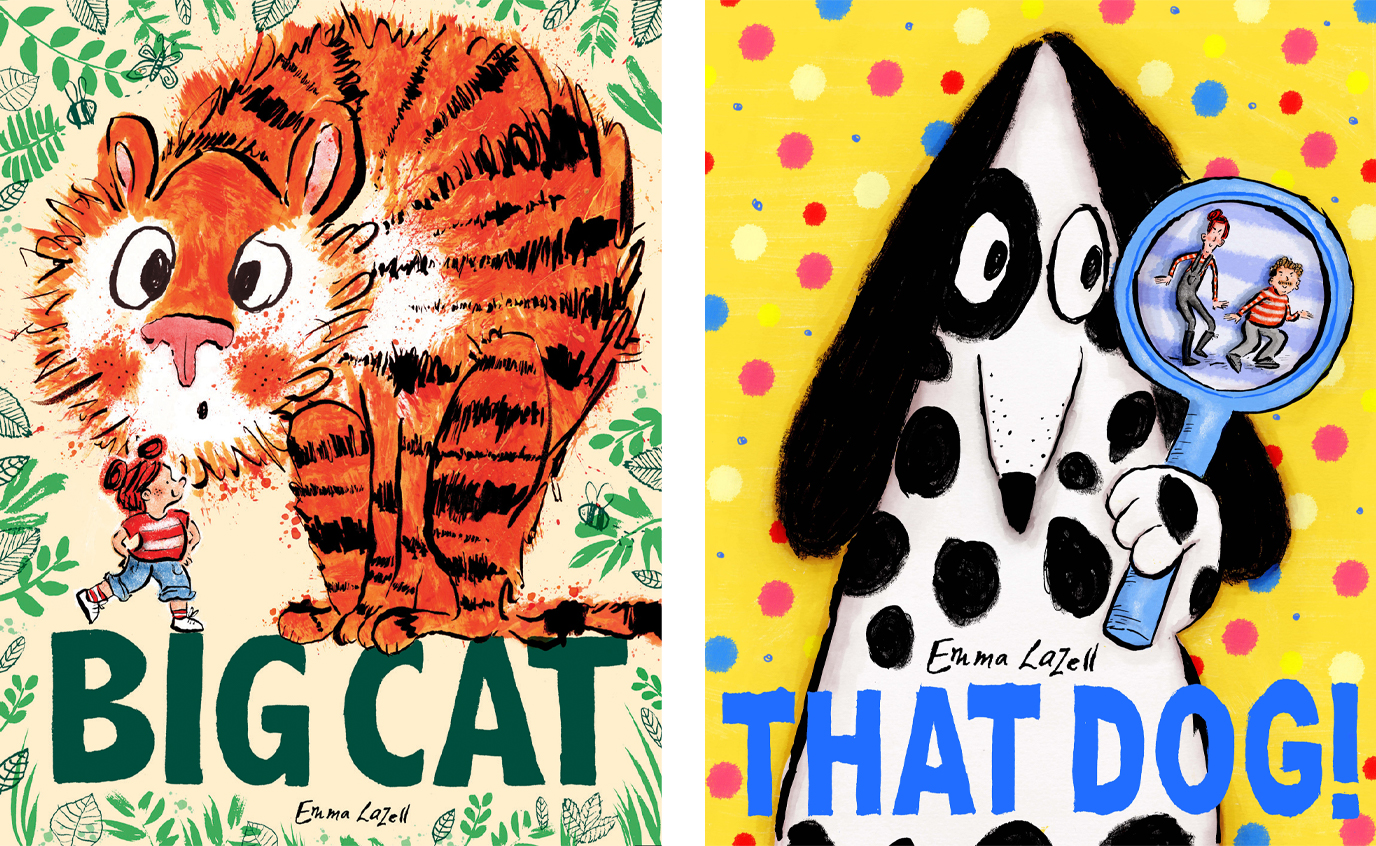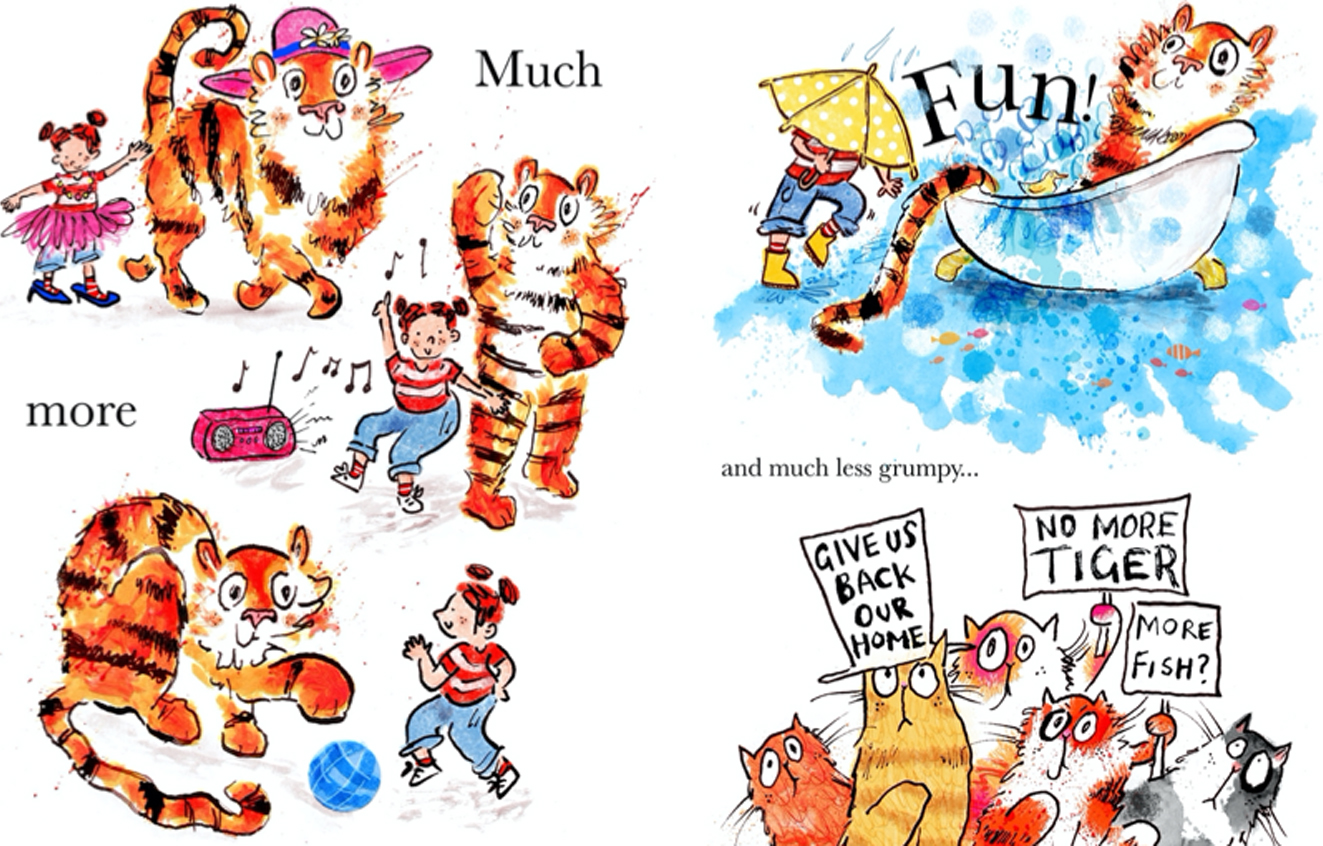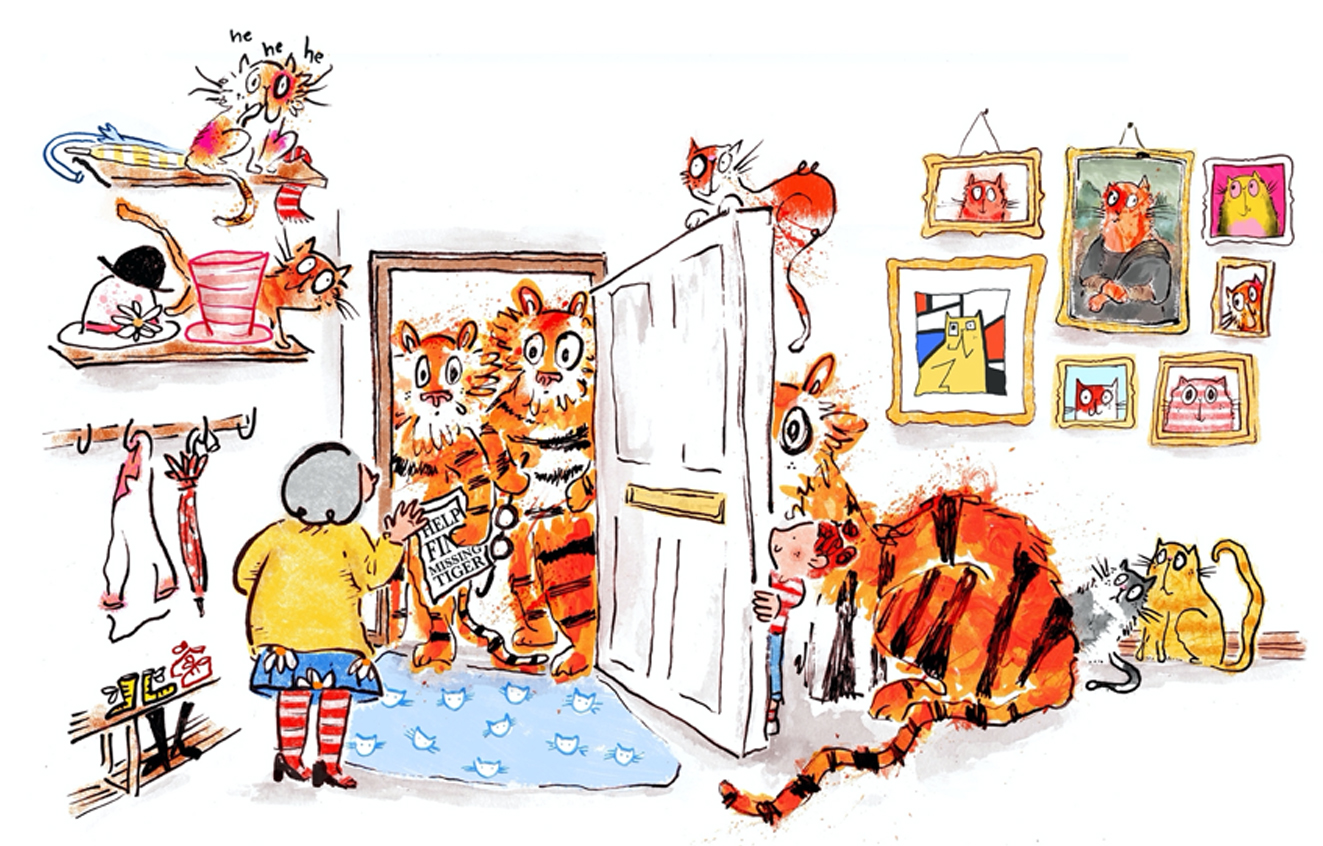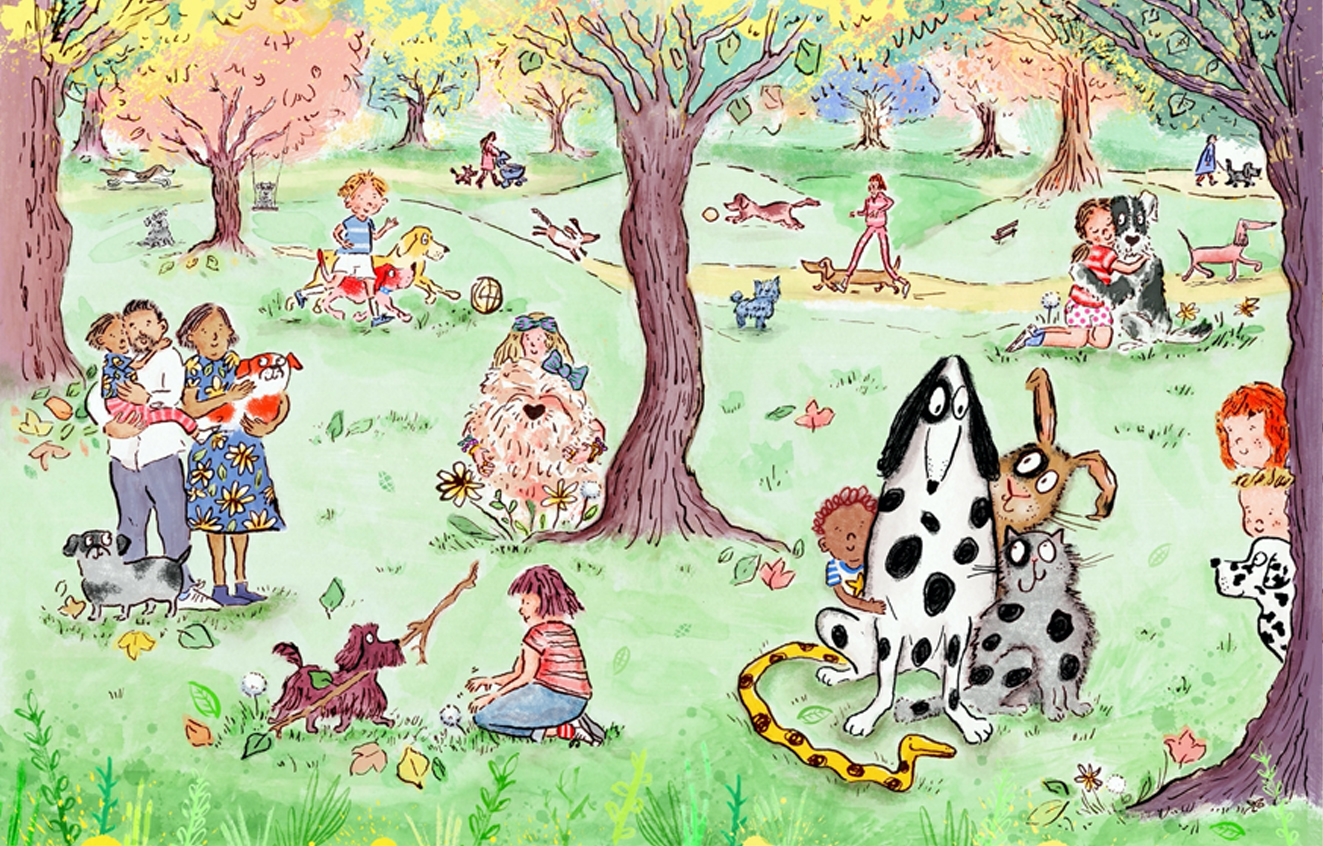Draw a Picture a Day Book
Drawing for Picture Books with Emma Lazell
Emma Lazell is a UK based illustrator and author of children's books. Her debut picture book,Big Cat, was published in Spring 2019 by Pavilion Children's Books. Emma's work is linear and expressive, and sprinkled with irony and playfulness. In 2018 Emma completed the hugely prestigious MA in Children's Book Illustration at Cambridge School of Art, Anglia Ruskin University, graduating with a distinction. Alongside working on books, Emma loves to visit schools, libraries and events to share her love of reading, writing and drawing. Here Emma gives some fascinating insight into the world of illustration, and her own process and experience of drawing for picture books. Check out these wonderfulBig Cat resources on the Pavilion Books site and download here! Piece written by Emma Lazell. For me, drawing for picture books starts, much like drawing for any other drawing endeavour, in a sketchbook. Something I have learned is that the most important visual research you can do is drawing and observing from life. It will always be important to look at other work too, and there is so much wonderful picture book work to look at, from contemporary illustrators like Beatrice Allemagna, Maisie Paradise Shearring, Isabelle Arsenault, Axel Scheffler and Oliver Jeffers, to classic illustrators like Tove Jansson, John Burningham and Quentin Blake. But I think it's important to fuel your drawing with a healthy balance of observation from life, and learning and taking inspiration from what's already out there. Look at the way other illustrators and artists solve problems in their work, and learn from that, without trying to emulate their way of creating pictures. You need to find your own unique way of working that is recognisably you. I think finding this is the hardest part of drawing for any capacity, and perhaps especially picture books, but to try and give it a formula: I think it comes from 90% drawing and observing what is around you, and 10% visual influences from existing picture-books, artists, illustrators, and so on. While I was studying on the Children's Book illustration MA at Cambridge School of Art, I found myself slipping into the trap of trying to conform to a 'style' by looking at the way other illustrators drew characters, and attempting to create characters in that vein. I could draw people and animals from life very passably, but when it came to creating characters, I was ignoring those drawings, and attempting to follow self-imposed rules based on what worked for other illustrators. Of course these characters I created were unsuccessful. They were not expressive or believable because they weren't coming from me. I really appreciate tonal drawing, and graphic artwork without lines, but I have since learnt that creating work that way does not work for me. I work linearly, and it is through expressive lines that I inject my characters with expression and humour, and because it comes naturally, there is so much more passion in the characters. So the most important lesson I learnt is that drawing should come as naturally as handwriting, and cannot be forced. I now approach character drawing and imagined scenes in the exact same way I approach drawing from life, and I will always use drawing from life to inform my imagined drawing. My first picture bookBig Catbegan in my sketchbook as drawings of my own cat, Ruby, getting bigger and bigger, and taking up too much space in the house. I drew her from life, but exaggerated, and put her in scenes drawn from dream interiors found on pinterest. At the same time, I was teaching my art tutee perspective, and we were doing lots of drawing from observation together on the streets of Cambridge, and some of these drawings worked their way into myBig Cat sketchbook, and ended up informing one of my final spreads forBig Cat. I find that once I have a character, a story starts to form on its own when I start putting that character into different scenarios. Those scenarios don't need to make it into the story, but they will help you get to know your character motivations. I can't remember exactly how the leap was made from oversized Ruby, to the 'Big Cat' of the story, but, as I tell children in my schools visits: 'I soon realised a tiger would be "much more fun, and much less grumpy!"' Taking drawings out of the sketchbook and turning them into final illustrations is always the tricky bit. Big Cat was the first picture-book I worked on, and I was certainly learning while I was creating it. BeginningBig Cat, I knew the necessary steps to creating a picture-book: storyboarding; creating dummy books; working on rough illustrations and then taking those illustrations into finals, but I had to learn for myself how to use each step, and which steps were most important for my own process. I think everybody uses these steps in different ways. Working on my second book,That Dog! I felt much more confident with my process. I had learnt that the storyboarding step was really vital for my way of working, and that I have to spend a long time revising and editing spreads when they are still at the thumbnail stage, but I don't need to make many dummy books. I instead make visual plans of spread layouts to check I have varied page turns, and to plan for moments of impact, where I might use a double page spread. I also won't spend very long at the roughs stage, as I will have spent a long time perfecting composition at thumbnail stage. As soon as I have a rough I am happy with, I will scan and enlarge, and then put it on the lightbox and redraw in my dip pen (making sure to have the lightbox dimmed, so that I am still creating fresh and original mark making without tracing my rough linework). This will form the linework for my final artwork which I will then finish digitally using scanned paint textures and digital brushes. You can purchase Big Cat online here. Check out these wonderfulBig Cat resources on the Pavilion Books site and download here! Emma's new bookThat Dog! is out in August 2020 and can be pre-ordered here! Thinking of purchasing one of Emma's books on Amazon? Visit smile.amazon.co.uk instead. This is the same site as Amazon with the same products - just the company's 'charitable arm'. More than2,000 UK charities are registered to the scheme that sees Amazon donate a portion of the net purchase price of eligible products to a charity of the consumer's choice. Head to smile.amazon.co.uk and search for either 'The Big Draw' or 'The Campaign for Drawing' in the 'Pick your own Charity' tool bar and select. A portion of the proceeds from your following purchases will go directly to The Big Draw charity. Yippee! Please note:we are not in any direct partnerships with Amazon. We have linked into their respective charitable schemes.![]()

![]()
![]()

![]()
![]()

![]()

![]()
![]()


Support a charity when you Shop Online

Source: https://thebigdraw.org/drawing-for-picture-books-with-emma-lazell
0 Response to "Draw a Picture a Day Book"
Post a Comment